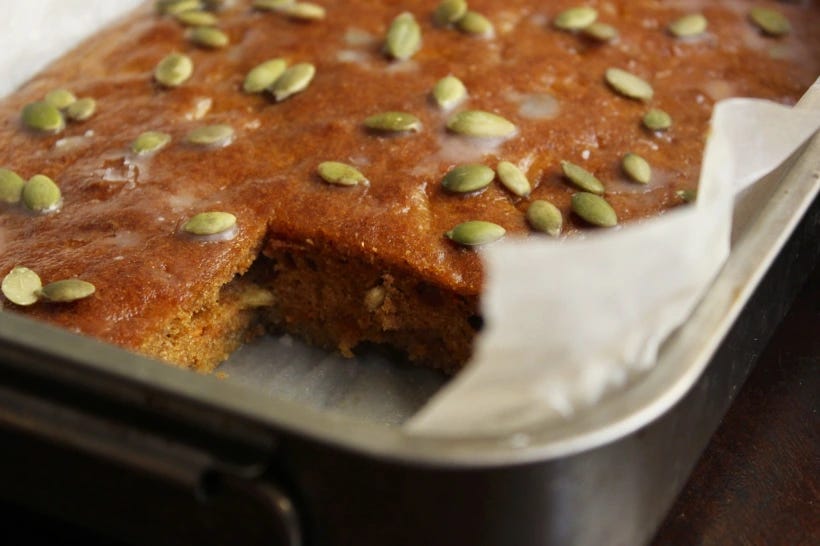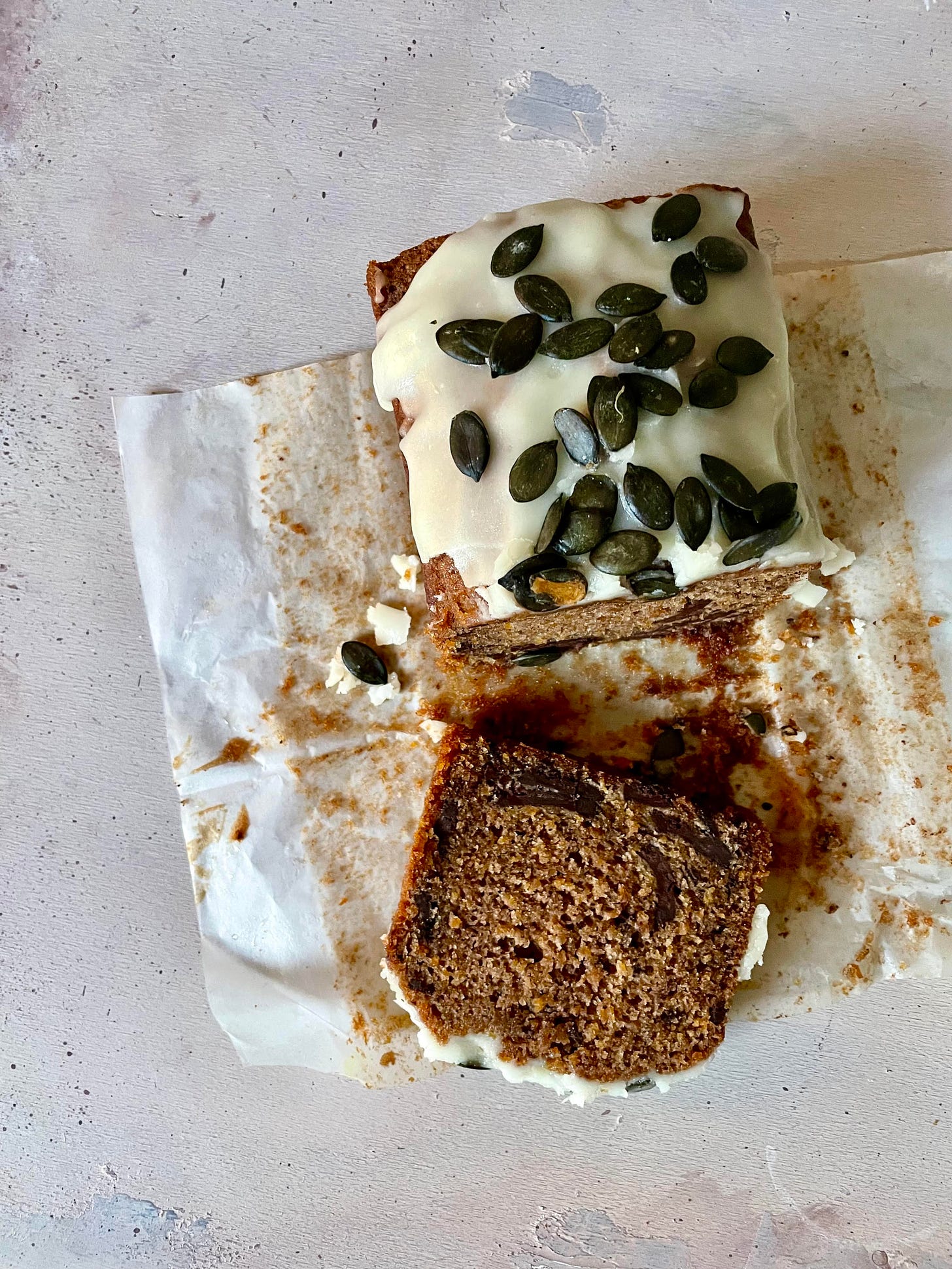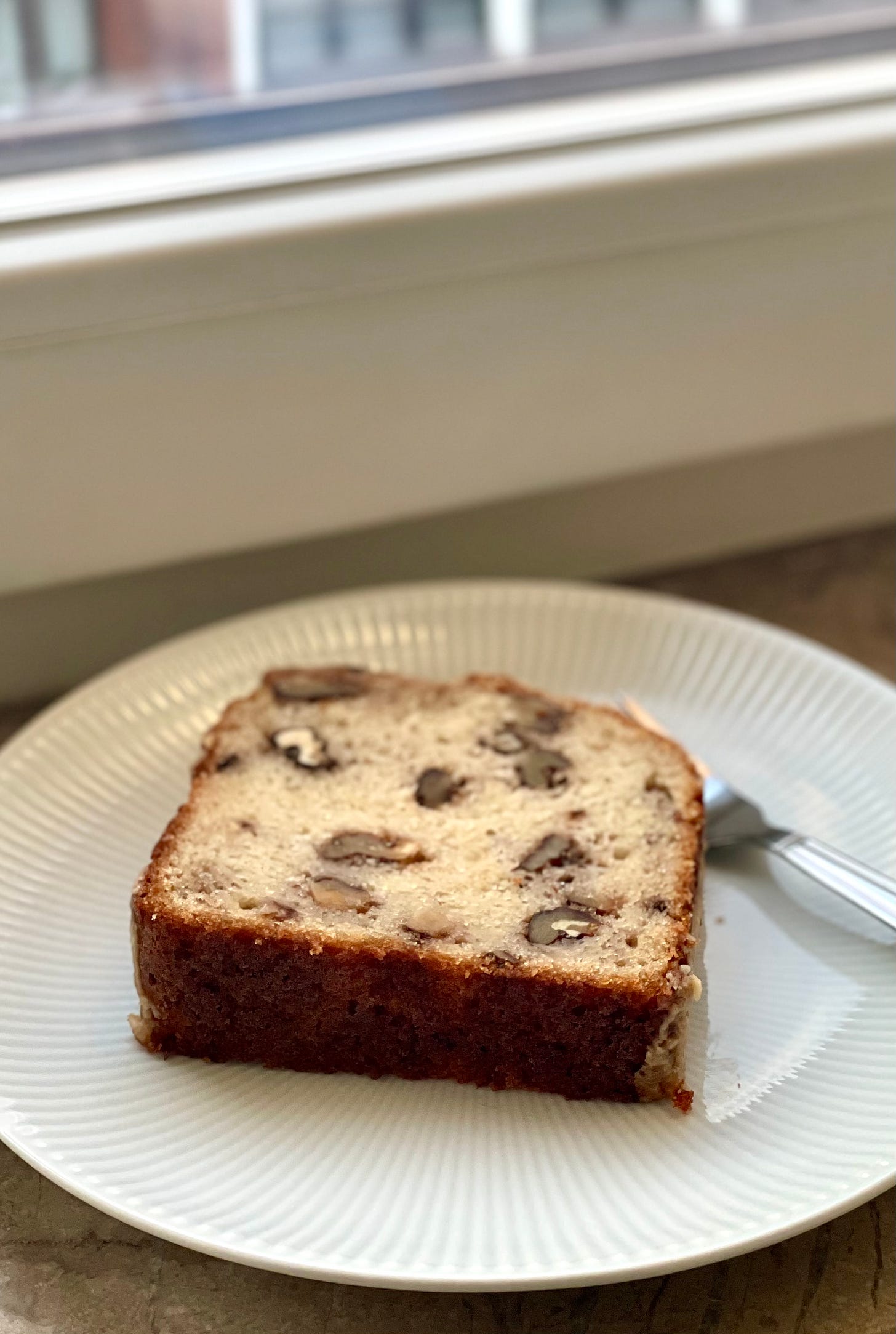
Hello, and welcome to Newsletter No 43 here on Substack! Thank you for stopping by. If you are already subscribed – THANK YOU! Seeing thousands of you read my newsletters each month means the world to me! And if you are not yet a subscriber, hit the link below if you are interested in recipes as well as tips and tricks to make the most of our increasingly eclectic pantries and a good dose of my at times random musings about all things food!
❤️ Also, did you know that if you hit the HEART at the top or bottom of this post, it makes it easier for people to find this newsletter? (And also puts huge smile on my face!)
While there has been a bit of a chill in the air for a few weeks already, today officially marks the first day of fall. In fact it is also the first day I noticed the leaves on the trees at my son’s playground starting to change colour. So while the markets are still full of late summer / early autumn fruit like figs and plums begging us to bake with them it felt appropriate to start thinking ahead to the next few weeks and months when figs and plums will be replaced by all kinds of root vegetables, tubers and pumpkins / squashes.
Yet somehow, at least in this part of the world, and compared to carrots in particular, vegetables like sweet potatoes, parsnips, celeriac, and the various pumpkin and squash varieties are still somewhat overlooked when it comes to baking. Yet why should carrots (ok, and courgettes) have all the fun when it comes to baking with vegetables? After all, there are all these other kinds of delicious root vegetables, tubers and pumpkins/squashes for us to play around with and now is really the perfect time of the year to start experimenting with them!
So consider this week’s newsletter your short introductory guide to baking with root vegetables, tubers and pumpkins/squashes. We will talk about how to adapt your favourite carrot or maybe banana bread recipe to sub in vegetables like sweet potato or parsnips, for example (spoiler alert: it is all about water content!) – because why start from scratch when you can lean on an existing recipe that works?! We will also cover lots of delicious potential flavour combinations for a myriad of root vegetables, tubers and pumpkins/squashes. And if you are not yet ready to start adapting or developing your own recipes, I also share a long list of delicious recipe ideas for baking with vegetables – from simple loaf cakes and muffins to delicious pies and layer cakes; from the very plain to the heavily spiced.
Do you already bake with any root vegetables, tubers or pumpkin/squash? If so, do you have a favourite recipe to share? I would love to hear about it in the comments below!
Adapting and developing existing recipes
Developing your own recipes using root vegetables, tubers and pumpkins/squashes is thankfully not difficult at all. Because armed with (i) your favourite recipes for say banana bread or carrot cake for example, (ii) knowing the average water content of your favourite root vegetables, tubers and pumpkins/squashes (as compared to bananas and carrots) you want to sub in and (iii) a list of potential delicious flavour combinations, you can easily adapt existing recipes to use different root vegetables, tubers and pumpkins/squashes.
Water content
Below you can see how bananas and carrots (and courgette for good measure) compare to different root vegetables, tubers and pumpkins/squashes in terms of average water content. Why worry about water content? If you are familiar with sourdough baking and the quest for ever higher hydration doughs, you will already know that changing the water content of a recipe can lead to dramatically different results. Yet what might be desirable in sourdough bread is much trickier in a cake recipe and can easily result in a ruined cake! And when it comes to substitutions in recipes we want to substitute ingredients that will perform in largely the same way as whatever ingredient they are replacing.
Bananas 75%
Sweet Potatoes 77%
Parsnip 80%
Butternut Squash 87%
Kabocha Squash 88%
Celeriac 88%
Carrots 86-95%
Pumpkin 90%
Courgette 94%
As you can see from the above, overall there is not a huge amount of variation in water content even if there is quite a range from the 75% water content of bananas to the up to 95% water content of carrots.
What does this tell you? If you already have a great recipe for banana bread you could sub in mashed sweet potatoes or mashed parsnip essentially 1:1 to the banana in terms of weight because they both have a very similar water content as bananas without risking a cake that is too wet, fails to rise properly and as a result is dense in the middle, takes longer to bake etc. However, when it comes to say butternut squash, kabocha squash, celeriac or pumpkin, you are better off adapting a favourite carrot cake recipe given their higher (and more comparable to carrots) water content.
The next step is to try one of the flavour combinations below that work well with your chosen root vegetable, tuber or pumpkin/squash and use those in your adapted recipe.
Flavour Combinations
As always, feel free to play around with what sounds good to you but below are some ideas to get you started. As a rule of thumb, I find that sweeter tasting vegetables like sweet potatoes and the various pumpkin/squash varieties can take stronger flavours – including earthy spice mixes like ras el hanout and garam masala we might normally associate more with savoury cooking as well as sweeteners with more intense flavours like honey, brown sugar, maple syrup or even molasses. By contrast, I find the flavour of say parsnip and celeriac much more delicate so prefer pairing them with vanilla or tonka bean, for example.
-
Sweet Potatoes, Butternut Squash, Kabocha Squash, Pumpkin etc: ras el hanout, garam masala, nutmeg, turmeric, cinnamon, cardamom, honey, brown sugar, pistachios, pecans, sesame seeds, coconut, vanilla, cinnamon, maple syrup, molasses, milk or dark chocolate, brown butter,
-
Parsnip, Celeriac: vanilla, tonka bean, cardamom, nutmeg, pecans, hazelnuts, walnuts, pepper, white chocolate, maple syrup, brown sugar, brown butter.
When it comes to spices, start with maybe a couple of teaspoons (although for spices with strong flavours like nutmeg and cardamom I would probably start with just 1/2 or 1 teaspoon) and see how you like that before increasing further. As for chocolate, I find 100g is plenty for a simple loaf cake – the Kabocha squash recipe linked to below includes 230g so feel free to use more chocolate! Similarly, when it comes to nuts and seeds, 100-150g is plenty for a simple loaf cake.
So your favourite banana bread could become a sweet potato bread with ras el hanout and dark chocolate chunks. Or it could become a parsnip loaf cake with tonka bean and pecans!
Recipe ideas
But before you start adapting recipes or developing your own recipes, here are some delicious-sounding recipe ideas for cakes, loaf cakes and pies that I came across and that make the most of root vegetables, tubers and pumpkins/squashes:
Sweet Potatoes, Butternut Squash, Kabocha Squash, Sweet Potato, Pumpkin
Celeriac and Parsnip
There is also a delicious sounding recipe for Parsnip Cake with Orange and Anise Seed in Yotam Ottolenghi and Helen Goh’s book Sweet, but I could not find a link to a non-paywalled version of the recipe. But worth having a look if you have that book on your shelves or your local library has a copy!
I should be back with a new recipe for you next week. Until then, have fun experimenting in the kitchen with your favourite root vegetables and tubers and pumpkins/ squashes!





:max_bytes(150000):strip_icc()/ga_56946eb2ede4a68b_spcms-2000-ca7f9e9f55e442a3a9cdbbe530942db7-5aaaed2cbd0143a5ba007ae183d0131a.jpeg?w=768&resize=768,0&ssl=1)

